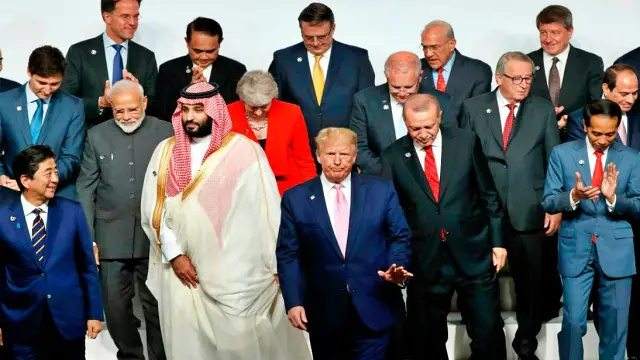The New York Times columnist Thomas L. Friedman, who inspired the creation of the Thomas Friedman column generator, once explained his work as an opinion writer by saying that he did pictures, not pixels.
Pictures are easy to wing, and easier to fudge, as Ed Smith demonstrated in his ill-fated essay about the role of stress in elite sport. The essay was withdrawn, thanks mainly to the persistent inquiries of Subash Jayaraman (1,2,3,4). Whenever such things occur, the gossip machine in the community in which it occurs is attracted to this new subject like a moth. Among the things which have been widely observed about Smith in the underbelly of the cricket writing world is his tendency to “recycle” or, less charitably, “self-plagiarize”. Given the sheer volume of Smith’s output, it is not surprising that he does this. The merits of this practice are debatable.
The idea of repeating oneself does not worry me. One of the most effective ways to drive home ideas is to keep restating them (and in the process, developing them).
In April 2015, Ed Smith wrote an essay for ESPNCricinfo in which he compared the development of Kenyan long distance runners to the development of cricketers. His thesis in the essay was based on a book marathon running by Ed Caesar titled Two Hours. I got interested in this subject when I read a two part story about the researcher Yannis Pitsiladis’s ambition of developing a runner who can run a marathon in under two hours by Jere Longman in the New York Times (1, 2) earlier this year. Since then, I’ve followed this subject in The Sports Gene by David Epstein, and, thanks to Smith’s cover story in the July 2016 issue of The Cricket Monthly entitled Batting 3.0, Ed Caesar’s Two Hours.
Smith does not cite either Caesar or Epstein in Batting 3.0. But it turns out that the portion on running in this cover story draws heavily on his earlier essay from April 2015. Here is the portion from Batting 3.0
In 2015, I wrote for ESPNcricinfo about marathon runners. Nearly all the best are drawn from a particular Kenyan tribe, the Kalenjin, an ethnic group of around five million people living mostly at altitude in the Rift Valley. The best of them grow up running without shoes. The debate about whether other athletes should try to mimic the barefoot running technique remains contested and unresolved. However, it is overwhelmingly likely that the unshod childhood of the Kalenjin does contribute to their pre-eminence as distance runners.
And yet it is also true that as soon as Kalenjin athletes can afford running shoes, they buy them. They know that the protection offered by modern footwear helps them to rack up the epic number of hours of training required to become serious distance runners.
So here is the conundrum. If an athlete wears shoes too often and too early, when his natural technique and running style are still evolving, he significantly reduces his chances of becoming a champion distance runner. But if he doesn’t wear them at all in the later stages of his athletic education, he jeopardises his ability to train and perform optimally when it matters.
Put simply, the advantages of modernity and technology need to be first withheld and then embraced. Most Kenyan runners begin wearing trainers in their mid-teens. Some sports scientists argue that if they could hold off for another two or three years, they’d be even better as adult athletes. But no one knows for sure exactly when the “right” time to start running in shoes is.
Logically there is a further complexity. Imagine two equally talented developing athletes, one with shoes, the other barefoot, neither yet at their athletic peak. Wearing shoes, by assisting training and recovery, would yield an advantage at the time. But that short-term advantage would leave behind a long-term disadvantage, by depriving the athlete of the legacy that barefoot runners enjoy when they begin wearing shoes at a later stage. In other words, building the right foundations during adolescence is more important than doing whatever it takes to win at the time.
What else can cricket learn from the Kalenjin? The analogy is obviously inexact. It is possible to run well with zero coaching, though that is less likely in cricket (as we saw with the grip). But the deeper point holds. For developing cricketers, early specialisation and over-coaching – though it may apparently yield an advantage at the time – turns into a disadvantage over the long run. De Villiers might have been a “better” cricketer aged ten if he’d played only cricket. But at 25, the rugby and tennis inside him helped him to go past the players stuck in a cricketing ghetto.
One constant danger in the era of ultra-professionalism is that our sport falls prey to the delusion that educating cricketers can be turned into an exact science, with the latest fads and theories imposed on the next generation across a worldwide network of “expert” and “professional” academies. This problem is exacerbated by cricket’s tendency towards hobby-horseism. A good idea is turned into a mantra that hardens into rule. You must do this, you can’t do that, there is only one way. A fad breaks out that takes on a momentum of its own. In fact, we are increasingly learning that the best players usually develop (though not always) through a complex, intuitive and often mysterious mixture of informal and formal learning, with informal education – “no trainers” – dominating the conversation in the early years.
Who are the Kalenjin of batsmanship? In terms of the number of players possessed of superb technique, I think India leads the world. Part of this, admittedly, is the sheer volume of candidates. Another factor is that fewer Indian players – compared to English ones, for example – experience a structured or official learning environment at a very young age. They play. So their batting accidentally benefits from the Kalenjin pattern – technology and science first withheld, then embraced. As Indian cricket gets richer, the challenge, ironically, will be to escape the damage that follows from meddling, over-interventionist systems and coaches.
Here is the same portion from his 2015 essay:
Nearly all top marathon runners are Kenyan. In fact, they are drawn from a particular Kenyan tribe, the Kalenjin, an ethnic group of around 5 million people living mostly at altitude in the Rift Valley.
Here is the really interesting thing. The majority of top marathon runners grow up running without shoes. The debate about whether other athletes should try to mimic barefoot-running technique remains contested and unresolved. However, it is overwhelmingly likely that the unshod childhoods of the Kalenjin does contribute to their pre-eminence as distance runners.*
And yet it is also true that as soon as Kalenjin athletes can afford running shoes, they do buy them. They know that the protection offered by modern shoes helps them to rack up the epic number of hours of training required to become a serious distance runner.
So there is a paradox about long-term potential and running shoes. If an athlete wears shoes too often and too early, when his natural technique and running style are still evolving, he significantly reduces his chances of becoming a champion distance runner. But if he doesn’t wear them at all in the later stages of his athletic education he jeopardises his ability to train and perform optimally when it matters.
Put simply, the advantages of modernity and technology need to be first withheld and then embraced. Most Kenyan runners begin wearing trainers in their mid-teens. Some sports scientists argue that if they could hold off for another two or three years, they’d be even better as adult athletes. But no one knows for sure exactly when is the “right” time to start running in shoes. We glimpse the ideal athletic childhood, but its contours remain extremely hazy.
Logically, there is a further complexity. Imagine two equally talented developing athletes, one with shoes, the other barefoot, neither yet at their athletic peak. Wearing shoes, by assisting training and recovery, would yield an advantage at the time. But that short-term advantage would leave behind a long-term disadvantage, by depriving the athlete of the legacy that barefoot runners enjoy when they begin wearing shoes at a later stage. In other words, building the right foundations during adolescence is more important than doing whatever it takes to win at the time.
If the first essay was written by A, and the second were written by B, this would be a textbook case of mosaic plagiarism. Since A and B are the same person, it isn’t. It could be considered a case of self-plagiarism (a vexed issue), and there’s certainly recycling involved, but lets set aside the ethical implications of all this.
There is also the question of citation which is more serious. In Batting 3.0, Smith simply refers to the April 2015 essay by saying “In 2015, I wrote for ESPNCricinfo about marathon runners.” While this is perhaps literally true, it leaves out the bit where, in 2015, Smith wrote about something he read in a book about marathon runners. As he put it in that essay
When I read about the strange influence of first learning barefoot then using the latest technology – in the admirable and thought-provoking book Two Hours by Ed Caesar, published this July – I wrote in the margin: just like cricket coaching.
Having read Caesar, Epstein, Gladwell, and being familiar with some of the work of K. Anders Ericsson and his collaboration with Herbert Simon thanks to my day job, I’m not convinced that Smith’s version of what any of these writers are saying is plausible.
Smith’s central thesis in his 2015 essay is that Caesar’s account tells us that “the advantages of modernity and technology need to be first withheld and then embraced.” He bases this on his reading. in Caesar’s work, of the use of shoes by Kenyan marathon runners. In Smith’s words, the proposition is as follows:
Here is the really interesting thing. The majority of top marathon runners grow up running without shoes. The debate about whether other athletes should try to mimic barefoot-running technique remains contested and unresolved. However, it is overwhelmingly likely that the unshod childhoods of the Kalenjin does contribute to their pre-eminence as distance runners.*
And yet it is also true that as soon as Kalenjin athletes can afford running shoes, they do buy them. They know that the protection offered by modern shoes helps them to rack up the epic number of hours of training required to become a serious distance runner.
So there is a paradox about long-term potential and running shoes. If an athlete wears shoes too often and too early, when his natural technique and running style are still evolving, he significantly reduces his chances of becoming a champion distance runner. But if he doesn’t wear them at all in the later stages of his athletic education he jeopardises his ability to train and perform optimally when it matters.
I looked hard to find this argument in Caesar’s work. I could not locate it. Smith sets up an opposition between “sports science”, “modernity”, “technique and science” on the one hand (these, of course, are the bailiwick of modern western coaches/trainers/shoe companies etc.) and “natural technique”, “folk wisdom and feeling”, and “homespun training methods” on the other (these belong to the Kenyans). Apart from being nauseatingly paternal, this view also misunderstands the idea of “science”. A science provides reliable explanations of things and involves the development not only of these explanations, but also the methods and theories which can be used to form reliable explanations.
Here is what Caesar actually says. His major source is Yannis Pitsiladis, who also figures in Epstein’s chapters on running in The Sports Gene. In the notes, on page 207, Caesar writes:
‘At the time of writing, Yannis Pitsiladis and several other scientists were preparing to publish new data that proved what Pitsiladis himself had long believed: that kids who grow up running in bare feet develop better “foot health” – stronger, more responsive feet and ankles – than their shod counterparts in Kenya and other countries. This might be one factor to help explain Kenyan running dominance. By the time “habitually barefoot” kids start running in sneakers, in their teens, their tendons and muscles are already well developed, their bone strength is superb, and they are less likely to problem arches in their feet. Their form, meanwhile, is rock solid. As a follow-on from this discovery, Pitsiladis told me it would be interesting to see whether a runner might ultimately develop stronger if he trained without shoes, for longer, before switching to sneakers.’
In the main text, the debate about barefoot running occurs in a specific context which Smith omits altogether. While describing the history of the development of shoes used by long distance runners, Caesar reports that at one point the conventional wisdom of the industry was that runners wanted a shoe which basically felt like running barefoot – “Less than a hundred grams, not a lot of cushioning” as Andy Barr, a designer for Adidas tells Caesar. To their surprise, they found that elite runners wanted the exact opposite. This motivated Adidas to design shoes against the prevailing conventional wisdom. This conventional wisdom had come about thanks to Christopher McDougall’s Born to Run and, in Caesar’s words, “the explosion of the barefoot running movement.”
Caesar reports that the Italian physiotherapist Vincenzo Lancini believes that Kenyan runners feet propelled them faster than other athletes with a smaller loss of energy. Lancini believes that this is due to the large amount of time Kenyan runners spend barefoot as children and as young teenagers. Caesar himself points out that even top runners keep “micro-training” the muscles of the foot and lower leg by training on rough, uneven roads. Caesar notes that the central character in his book, the runner Geoffrey Mutai for instance “doesn’t spend a minute of his working day on a flat surface, and so his muscles are always working to balance and respond.” As Lancini puts it, “They learn to listen with their feet.”
Unsurprisingly, what is common to Lancini and Pitsiladis’s accounts (and to Caesar’s reporting of these accounts) is that they are careful, narrow explanations. At every stage in their accounts, both Epstein and Caesar take great care to avoid sloppy generalizations. It is not surprising that very little time is spent in the two books mulling over the apparent “conundrum” which seems to have captured Smith’s imagination. It’s worth quoting again. Smith says
So here is the conundrum. If an athlete wears shoes too often and too early, when his natural technique and running style are still evolving, he significantly reduces his chances of becoming a champion distance runner. But if he doesn’t wear them at all in the later stages of his athletic education, he jeopardises his ability to train and perform optimally when it matters.
There isn’t any actual conundrum in that paragraph. Where’s the contradiction between not wearing (or rather, not being able to afford) shoes when on is a kid and wearing them when one is no longer a kid? For that matter, what is “natural” about learning to hit a golf ball against a circular water tank (as Bradman did), and what is unnatural about being coached? If the shoe is the modern “technology” of running, what is its counter part in Smith’s cricketing analogy? Bats? Or coaching technique?
In Smith’s lackadaisical semantic universe, technique, technology, science and natural things are all interchangeable. They mean whatever he means they mean every time he uses them.
It continues in the latter half of Smith’s 2015 essay. He writes
“Connected to the question of impairing natural development is the problem of over-training and specialising too early. The now debunked “10,000 hours theory” – which holds that genius is created by selecting a discipline as early as possible and then loading on mountains of practice – is being replaced by a far more subtle understanding of nurturing talent.”
The 10,000 hours theory has absolutely nothing to do with “genius”. It has to do with expertise. K. Anders Ericcson was responding in his study to the idea that expertise in predominantly down to “innate talent”. (See Gladwell’s response to Epstein, who has a careful argument complicating the 10000 hour rule in The Sports Gene) In their study, the authors conclude the “elite performance as the product of a decade or more of maximal efforts to improve performance in a domain through an optimal distribution of deliberate practice.” (p. 400). There’s nothing there about “specializing too early”, or about “selecting a discipline as early as possible.” All they’re saying is that contrary to the proposition that expertise down to immutable innate talent, it is actually down to putting in about 10 years of deliberate effort. The argument they make is about the immutability of innate talent (i.e. the idea that innate talent is the invariant property of expertise). Deliberate practice has nothing to do with “specializing too early”. It simply refers to “a highly structured activity, the explicit goal of which is to improve performance”. Under this definition, AB de Villiers from playing organized hockey, or some other sport would still be “deliberate practice” and would still be included in the ten thousand hours.
Smith is considered to be a writer who explores ideas beyond the traditional scope of the cricket writer. Yet, the evidence suggests that he doesn’t really care about what words mean. Nor does he seem to take ideas particularly seriously. Ideas seem to be merely a vehicle to producing the massive volume of writing he churns out on a monthly basis for multiple publications. Perhaps he would say, like Friedman, that he does pictures, not pixels. But even pictures have to be meaningful and coherent, not glorified loose agglomerations of semi-technical terms.
Smith’s audience, and here I refer to readers who enjoy his work, seems to enjoy the painless stories he spins. If you take ideas and the things words mean seriously, Smith’s discussion of marathon runners, like his discussion of stress, ought to give you a splitting headache.



















